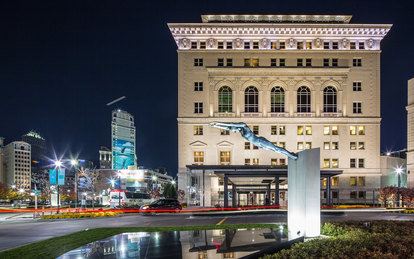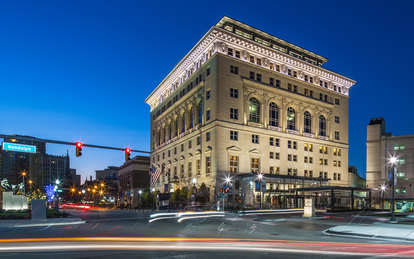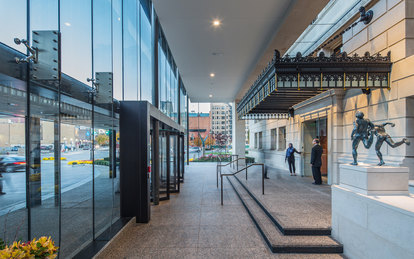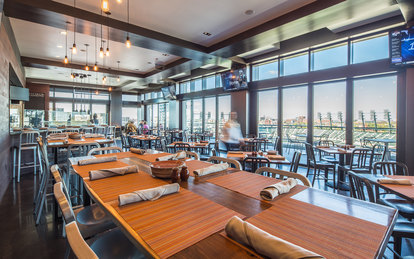Detroit Athletic Club Expansion and Renovation Master Plan
Detroit is the city of automobiles, but that doesn’t mean it hasn’t placed similar emphasis on the mobility of the human body and our team helped bring that idea to life through our work with the Detroit Athletic Club.
Client
Detroit Athletic Club
Location
Detroit, Michigan
Markets/Services
Architecture, Building Enclosure Consulting, Civil Engineering, Cultural, Historic Preservation, Interiors, Landscape Architecture, Lighting Design, Mixed-Use, Parks & Open Spaces, Urban Planning
Size
25,000 SF
Featured Awards
Illuminating Engineering Society (IES) -- Illumination Award of Merit, 2016
In 1887, a group of young men who zealously advocated the widespread celebration of athletics started the Detroit Athletic Club (DAC). It was recognized and taken over by the city’s most esteemed business leaders, who thought the club was worthy of a brilliant building, and thus commissioned architect Albert Kahn to create a neo-renaissance clubhouse.
But in 2005, almost 100 years had passed since the club’s construction, and the building was no longer as majestic as it had seemed a century ago. Not only would the building need to be modernized (i.e. the addition of a rooftop terrace, a café, an updated lobby, a fitness room expansion), but it would also need to be re-contextualized, as the city surrounding it and the people using it had evolved over the years; new needs had developed, and a new context had emerged.
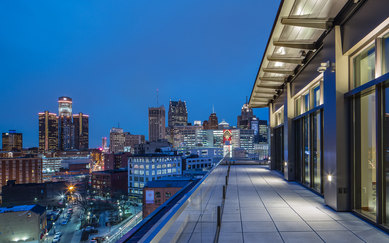
Due to the building’s age, structural elements needed to be addressed. This included reworking the rooftop’s irregular column grid and creating subfloors above the building’s original roof that could support a new column design, increasing the load that the new amenity rich rooftop deck could handle.
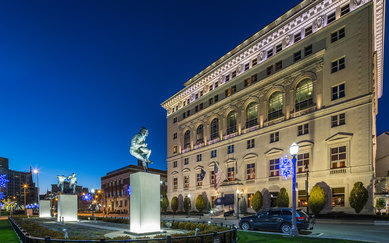
Lighting design also played an intricate role on the modernization of the club. By day, the club’s splendor was hugely apparent, it’s large white limestone presence reminiscent of a European masterpiece. At night, it receded, dimly lit, its storied past almost imperceptible.
SmithGroup created an urban landmark whose rich history and significance spoke loudly, while contemporary additions appealed to a new diverse membership pool. The resulting concept involved a layered lighting approach that corresponds to the building’s classical arrangement of base, middle and top. The design unifies the entire facade, establishing the club’s presence in the larger urban context while accentuating the facade’s texture and intricate carved detailing.
But the updates exist beyond the building’s campus. Athletic sculptures were added to the street median to strengthen the dialogue between club and city. These sculptures are accentuated by landscaping the addition of LED accent lighting which is strategically positioned to capture each athlete’s implied movement.
Detroit’s Athletic Club, built for old Detroit and former athletes, has now been refashioned, maintaining its relevance by respectfully responding to its current admirers.
